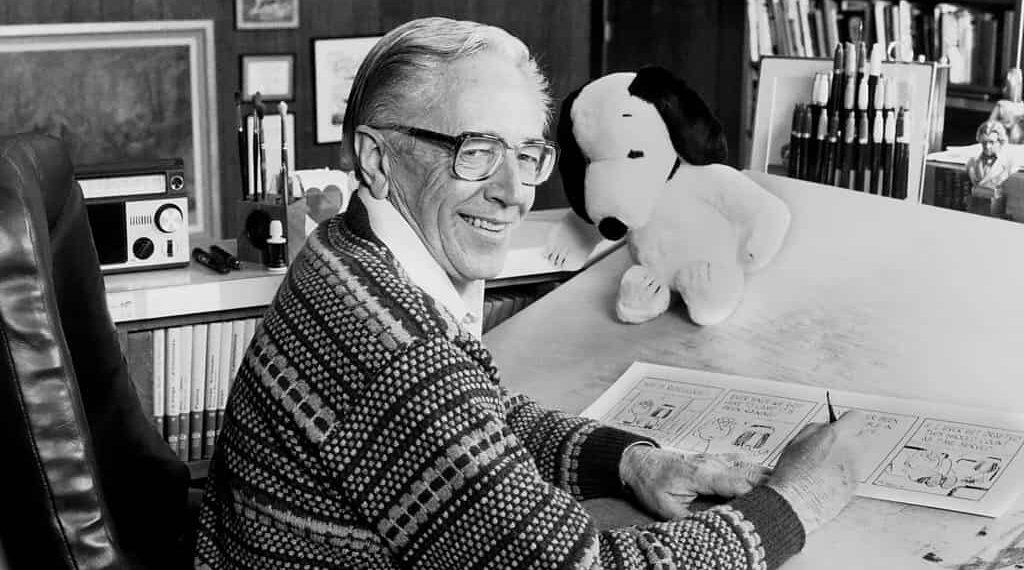How Charles M. Schulz Created Charlie Brown and Snoopy: The Journey of a Beloved Cartoonist
“You have to just draw something that you hope is funny.” This simple philosophy guided Charles M. Schulz, the creator of Peanuts, as he built an iconic comic strip empire that resonated with millions worldwide. For 50 years, Schulz drew every Peanuts strip himself, weaving humor and profound insight into the lives of a group of children, a lovable dog, and a cheeky bird. Even after announcing his retirement on December 14, 1999, due to ill health, Schulz’s legacy as a cultural touchstone remains unmatched.
A Modest Beginning with Global Reach
Schulz’s characters, led by the hapless Charlie Brown, became household names, yet the cartoonist approached his work with humility. In a 1977 BBC interview, he downplayed the grandeur of his storytelling, saying, “I’m only dealing with why we all have the feeling that people don’t like us.” Despite his modesty, Peanuts tackled universal themes—love, fear, insecurity, and resilience—connecting with audiences across ages and cultures.
The global impact of Peanuts was undeniable. By the 1960s, it was syndicated in over 2,600 newspapers worldwide. In 1969, NASA honored the strip by naming Apollo 10’s lunar modules “Charlie Brown” and “Snoopy.” Beyond the comics, the franchise inspired films, music, and an extensive range of merchandise, solidifying Schulz’s place in pop culture history.
Why Peanuts Worked: Depth Beneath Simplicity
Renowned scholar Umberto Eco famously praised the dual-layered appeal of Peanuts. “It charms both sophisticated adults and children with equal intensity,” Eco wrote, describing the comic as “a little human comedy” accessible to readers of all ages.
Schulz’s decision to focus on children was not originally artistic but practical. In a 1990 interview, he admitted, “I drew little kids because this is what sold.” His initial submission to United Features Syndicate in 1950 centered on these young characters, which struck a chord with audiences and launched his career.
The Genius of Charlie Brown and Snoopy
Schulz’s characters reflected aspects of his own life and observations. Charlie Brown embodied Schulz’s youthful insecurities, while Snoopy represented a whimsical, almost philosophical counterpoint. “It’s almost as if the dogs are smarter than the kids,” Schulz mused. He saw his characters as a versatile “repertory company,” enabling him to explore any idea.
This adaptability, paired with Schulz’s sharp wit and relatable storytelling, kept Peanuts fresh despite its relentless publication schedule. Schulz once remarked, “You have to kind of bend over the drawing board, shut the world out, and just draw something that you hope is funny.”
From Humble Roots to Iconic Heights
Growing up as a shy child, Schulz honed his craft through a correspondence drawing course, avoiding in-person classes out of fear of being overshadowed. Reflecting on his path, he said, “My entire background made me well-suited for what I do. If I could write better, I might have been a novelist. If I could draw better, I might have been an illustrator. But my being seems just right for being a cartoonist.”
His persistence and authenticity shone through in his work. Charlie Brown, despite being an “eternal failure,” became a symbol of resilience. Schulz said, “Charlie Brown never gives up. And if anybody should give up, he should.”
Farewell to the Drawing Board
In December 1999, Schulz announced his retirement due to cancer. His final daily strip was released on January 3, 2000, with a farewell Sunday strip following on February 13—the day after Schulz passed away. The poignant closing message read:
“Charlie Brown, Snoopy, Linus, Lucy… how can I ever forget them? I have been grateful over the years for the loyalty of our editors and the wonderful support and love expressed by fans of the comic strip.”
Through Schulz’s pen, Peanuts became more than a comic strip; it became a timeless exploration of the human experience, teaching us to laugh, reflect, and—most importantly—keep trying.
This article was rewritten by JournosNews.com based on verified reporting from trusted sources. The content has been independently reviewed, fact-checked, and edited for accuracy, neutrality, tone, and global readability in accordance with Google News and AdSense standards.
All opinions, quotes, or statements from contributors, experts, or sourced organizations do not necessarily reflect the views of JournosNews.com. JournosNews.com maintains full editorial independence from any external funders, sponsors, or organizations.
Stay informed with JournosNews.com — your trusted source for verified global reporting and in-depth analysis. Follow us on Google News, BlueSky, and X for real-time updates.













